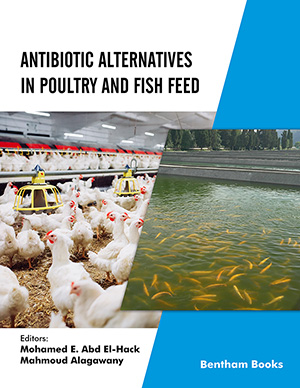Abstract
Abiotic stresses affect the plant growth in different ways and at different developmental stages that reduce the crop yields. The increasing world population continually demands more crop yields; therefore it is important to use low-cost technologies against abiotic stresses to increase crop productivity. Soil microorganisms survive in the soil associated with plants in extreme condition. It was demonstrated that these beneficial microorganisms promote plant growth and development under various stresses. The soil microbes interact with the plant through rhizospheric or endophytic association and promote the plant growth through different processes such as nutrients mobilization, disease suppression, and hormone secretions. The microorganisms colonized in the rhizospheric region and imparted the abiotic stress tolerance by producing 1-aminocyclopropane-1- carboxylate (ACC) deaminase, antioxidant, and volatile compounds, inducing the accumulation of osmolytes, production of exopolysaccharide, upregulation or downregulation of stress genes, phytohormones and change the root morphology. A large number of these rhizosphere microorganisms are now patented. In the present review, an attempt was made to throw light on the mechanism of micro-organism that operates during abiotic stresses and promotes plant survival and productivity.
Keywords: Abiotic stress, soil microorganisms, rhizospheric, phytohormones, ACC deaminase, endophytic, osmolytes, exopolysaccharide.
[http://dx.doi.org/10.1146/annurev.arplant.59.032607.092911] [PMID: 18444910]
[http://dx.doi.org/10.1093/jxb/erh269] [PMID: 15475377]
[http://dx.doi.org/10.1080/15226514.2015.1064352] [PMID: 26507686]
[http://dx.doi.org/10.1111/pce.13195] [PMID: 29532945]
[http://dx.doi.org/10.3389/fpls.2016.00657]
[http://dx.doi.org/10.21475/poj.10.03.17.pne600]
[http://dx.doi.org/10.1111/j.1365-313X.2009.03803.x] [PMID: 19154225]
[http://dx.doi.org/10.1080/15226514.2016.1203287] [PMID: 27348506]
[http://dx.doi.org/10.1016/j.jenvman.2011.12.032] [PMID: 22425876]
[http://dx.doi.org/10.1038/srep36773] [PMID: 27857159]
[http://dx.doi.org/10.1371/journal.pone.0061461] [PMID: 23637838]
[http://dx.doi.org/10.1111/1574-6976.12028] [PMID: 23790204]
[http://dx.doi.org/10.1371/journal.pone.0052565] [PMID: 23285089]
[http://dx.doi.org/10.1128/AEM.02239-08] [PMID: 19060168]
[http://dx.doi.org/10.1371/journal.pone.0048479] [PMID: 23119032]
[http://dx.doi.org/10.1016/j.apsoil.2011.09.011]
[http://dx.doi.org/10.1111/j.1365-2672.2012.05409.x] [PMID: 22816486]
[http://dx.doi.org/10.1094/MPMI-07-14-0225-R] [PMID: 25494355]
[http://dx.doi.org/10.1016/j.micres.2019.02.001] [PMID: 30825940]
[http://dx.doi.org/10.1016/j.jtbi.2013.10.007] [PMID: 24513137]
[http://dx.doi.org/10.1134/S0026261715010105]
[http://dx.doi.org/10.1002/jobm.201300173] [PMID: 25590871]
[http://dx.doi.org/10.6064/2012/963401] [PMID: 24278762]
[http://dx.doi.org/10.1139/m95-015]
[http://dx.doi.org/10.1111/j.1365-2672.2009.04414.x] [PMID: 19566717]
[http://dx.doi.org/10.1007/s11356-009-0154-0] [PMID: 19401827]
[http://dx.doi.org/10.1016/j.copbio.2009.02.012] [PMID: 19327979]
[http://dx.doi.org/10.1016/j.femsec.2003.12.009] [PMID: 19712436]
[http://dx.doi.org/10.1016/j.jenvman.2015.03.024] [PMID: 25796039]
[http://dx.doi.org/10.1016/j.envexpbot.2015.05.001]
[http://dx.doi.org/10.1038/nature11336] [PMID: 22859207]
[http://dx.doi.org/10.1007/s11356-015-4530-7] [PMID: 25903186]
[http://dx.doi.org/10.1007/s11738-016-2335-z]
[http://dx.doi.org/10.3390/microorganisms5040077] [PMID: 29186821]
[http://dx.doi.org/10.1111/j.1462-2920.2012.02777.x] [PMID: 22616609]
[http://dx.doi.org/10.1007/s00344-015-9490-0]
[http://dx.doi.org/10.1016/j.tplants.2008.10.004] [PMID: 19056309]
[http://dx.doi.org/10.1007/s00344-012-9283-7]
[http://dx.doi.org/10.1051/agro:2004064]
[http://dx.doi.org/10.1017/S0021859603003423]
[http://dx.doi.org/10.1093/jxb/erl101] [PMID: 16997901]
[http://dx.doi.org/10.3389/fpls.2018.00755] [PMID: 29922323]
[http://dx.doi.org/10.1007/978-3-662-45795-5_10]
[http://dx.doi.org/10.1016/S0176-1617(00)80048-6]
[PMID: 19295066]
[http://dx.doi.org/10.1017/S0960258500001720]
[http://dx.doi.org/10.1016/j.plantsci.2005.03.013]
[http://dx.doi.org/10.17221/4031-PSE]
[http://dx.doi.org/10.1007/s13213-015-1112-3]
[http://dx.doi.org/10.1016/j.bcab.2017.02.013]
[http://dx.doi.org/10.1007/978-3-642-21061-7_12]
[http://dx.doi.org/10.1146/annurev.phyto.36.1.453] [PMID: 15012509]
[http://dx.doi.org/10.1111/j.1365-3040.2009.02028.x] [PMID: 19671096]
[http://dx.doi.org/10.7554/eLife.20542] [PMID: 27848912]
[http://dx.doi.org/10.1038/nrm2020] [PMID: 16990790]
[http://dx.doi.org/10.1111/j.1574-6976.2007.00072.x] [PMID: 17509086]
[http://dx.doi.org/10.1093/jxb/erh010] [PMID: 14623902]
[http://dx.doi.org/10.1104/pp.125.4.2053] [PMID: 11299384]
[http://dx.doi.org/10.2478/s11756-018-0127-1]
[http://dx.doi.org/10.1007/s00425-005-1523-7] [PMID: 15824907]
[http://dx.doi.org/10.1094/MPMI-21-7-1001] [PMID: 18533840]
[http://dx.doi.org/10.1007/s003740000245]
[http://dx.doi.org/10.1139/b03-119]
[http://dx.doi.org/10.1007/s11274-010-0444-1]
[http://dx.doi.org/10.1007/s13199-016-0457-0]
[http://dx.doi.org/10.1007/s00248-013-0326-9] [PMID: 24337805]
[http://dx.doi.org/10.1016/j.plaphy.2014.09.001] [PMID: 25270162]
[http://dx.doi.org/10.1146/annurev-cellbio-092910-154055] [PMID: 22559264]
[http://dx.doi.org/10.1007/s10725-007-9232-9]
[http://dx.doi.org/10.1111/nph.12383] [PMID: 23822616]
[http://dx.doi.org/10.1038/nrg2484] [PMID: 19015660]
[http://dx.doi.org/10.1105/tpc.106.042267] [PMID: 17088606]
[http://dx.doi.org/10.1071/AR04082]
[http://dx.doi.org/10.1186/1477-5956-7-47] [PMID: 20034395]
[http://dx.doi.org/10.1046/j.1365-313X.2003.01819.x] [PMID: 12904208]
[http://dx.doi.org/10.1007/s00125-003-1226-1] [PMID: 14576983]
[http://dx.doi.org/10.3390/plants8100431] [PMID: 31635179]
[http://dx.doi.org/10.1094/MPMI-21-8-1067] [PMID: 18616403]
[http://dx.doi.org/10.3390/agronomy7010018]
[http://dx.doi.org/10.4238/2015.August.19.30] [PMID: 26345930]
[http://dx.doi.org/10.1007/s11104-011-0877-9]
[http://dx.doi.org/10.12775/ecoq-2013-0001]
[http://dx.doi.org/10.1007/s10482-015-0445-z] [PMID: 25860542]
[http://dx.doi.org/10.3389/fpls.2015.00348] [PMID: 26042137]
[http://dx.doi.org/10.1111/j.1574-6968.2007.00918.x] [PMID: 18034833]
[http://dx.doi.org/10.1007/978-3-642-21061-7_2]
[http://dx.doi.org/10.1016/j.plaphy.2011.01.015] [PMID: 21300550]
[http://dx.doi.org/10.1093/pcp/pct056] [PMID: 23592587]
[http://dx.doi.org/10.1007/s00374-009-0401-z]
[http://dx.doi.org/10.1002/jobm.201800309] [PMID: 30183106]
[PMID: 17562291]
[http://dx.doi.org/10.1016/j.plaphy.2013.01.020]
[http://dx.doi.org/10.1590/S1517-83822012000300046] [PMID: 24031943]
[http://dx.doi.org/10.1071/FP15265] [PMID: 32480492]
[http://dx.doi.org/10.1016/j.ecoenv.2014.03.008]
[http://dx.doi.org/10.1016/j.apsoil.2012.09.009]
[http://dx.doi.org/10.1111/nph.13588] [PMID: 26263508]
[http://dx.doi.org/10.1371/journal.pone.0121178] [PMID: 25816328]
[http://dx.doi.org/10.1128/AEM.01047-06] [PMID: 16980419]
[http://dx.doi.org/10.1002/jobm.201600188] [PMID: 27439917]
[http://dx.doi.org/10.1007/s11104-007-9233-5]
[http://dx.doi.org/10.1007/s11104-006-9015-5]
[http://dx.doi.org/10.5423/PPJ.SI.02.2013.0021] [PMID: 25288947]
[http://dx.doi.org/10.1080/17429145.2018.1471527]
[http://dx.doi.org/10.5423/PPJ.SI.07.2012.0103] [PMID: 25288948]
[http://dx.doi.org/10.1016/j.envexpbot.2013.09.014]
[http://dx.doi.org/10.1016/j.resmic.2003.09.006] [PMID: 14643409]
 64
64 1
1



















